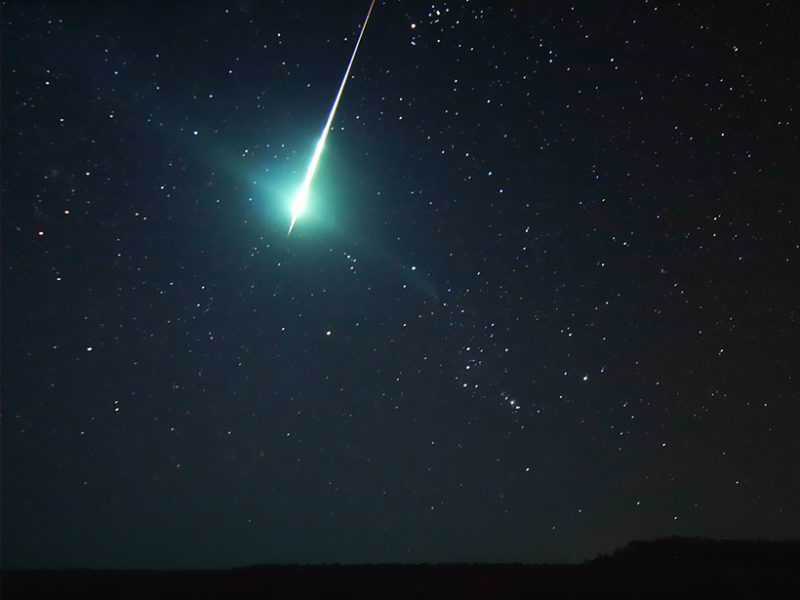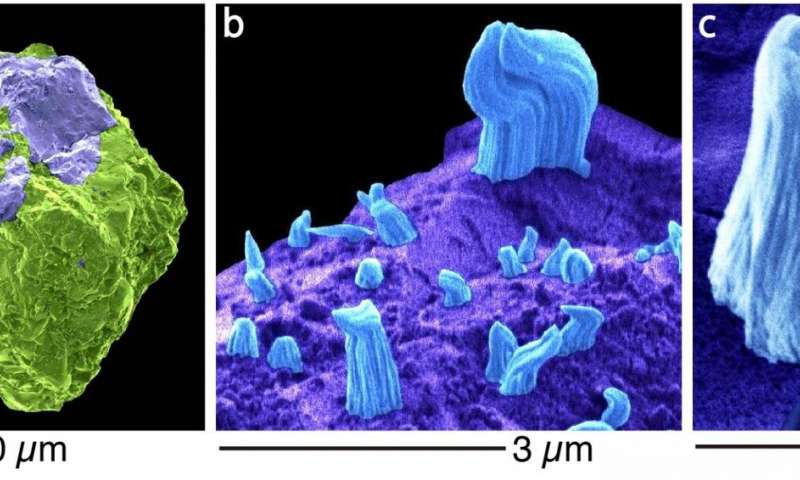William also sent in a link to a video ofa fireball streaking across the sky captured by a home surveillance camera in Phoenix Arizona – go to www.msn.com/en-us/video/science/giant-fireball-streaks-across-phoenix-sk… …
This occurred at 5.33am local time. The American Meteor Society also received reports of a meteor over Arizona.
He also sent in the link to https://eos.org/articles/tiny-fireballs-may-one-day-reveal-unseen-asteroids … a tiny fireball seen over Japan in 207 may come from an asteroid that could threaten the Earth at some point in the future. Scientists are using small meteors in the hunt for bigger cosmic bodies from which they may originate.
Every day 100 tons of space dust and rock fall into the earth's atmosphere, producing fireballs …
 … New research has tied one such, seen over Japan in 2017, to a Near Earth asteroid – one with an orbit that crosses the orbit of the earth. The asteroid, it appears, is a binary system – two pieces a km across that were once a single body. When it split in half it released a stream of fine particles, it is hypothesized, streams of dust that are thought to last just a few thousand years ago. It seems it must have split apart in the not too distant past as the the asteroid and its meteor stream are both travelling near our planet. See https://doi.org/10.1029/2020EO137232
… New research has tied one such, seen over Japan in 2017, to a Near Earth asteroid – one with an orbit that crosses the orbit of the earth. The asteroid, it appears, is a binary system – two pieces a km across that were once a single body. When it split in half it released a stream of fine particles, it is hypothesized, streams of dust that are thought to last just a few thousand years ago. It seems it must have split apart in the not too distant past as the the asteroid and its meteor stream are both travelling near our planet. See https://doi.org/10.1029/2020EO137232
At https://phys.org/news/2020-02-iron-clad-asteroid.html … an iron clad asteroid …
 … the image shows the mikneral troilet (FeS, violet) surrounded by silicate minerals (green) and iron whiskers (blue). Troilite is rich in iron and sulphur and as a result of space weathering by the solar wind the iron is leached and released from the troilite and deposited on the surface in the form of the needles (or whiskers) that have been disovered under the microscope.
… the image shows the mikneral troilet (FeS, violet) surrounded by silicate minerals (green) and iron whiskers (blue). Troilite is rich in iron and sulphur and as a result of space weathering by the solar wind the iron is leached and released from the troilite and deposited on the surface in the form of the needles (or whiskers) that have been disovered under the microscope.
